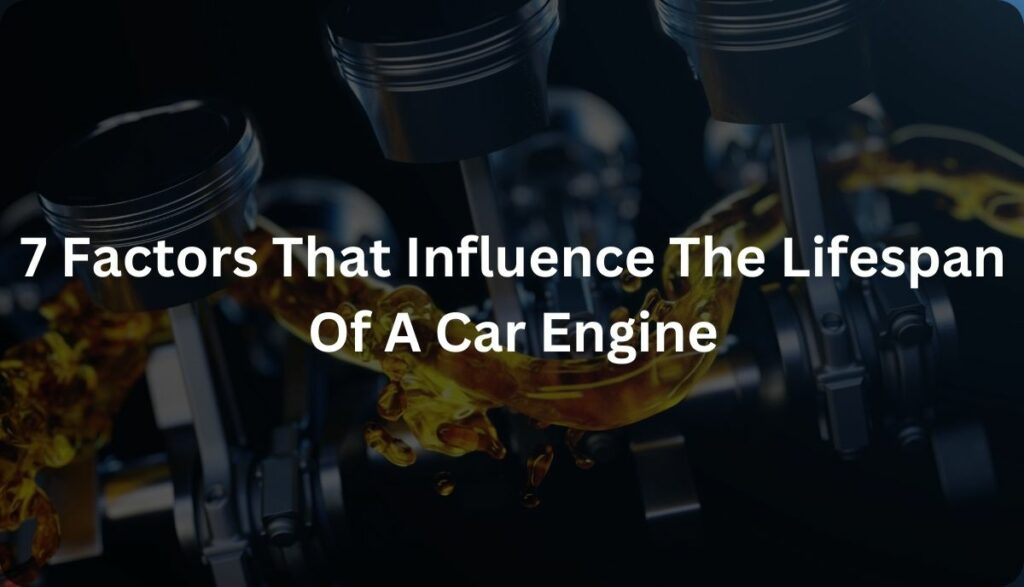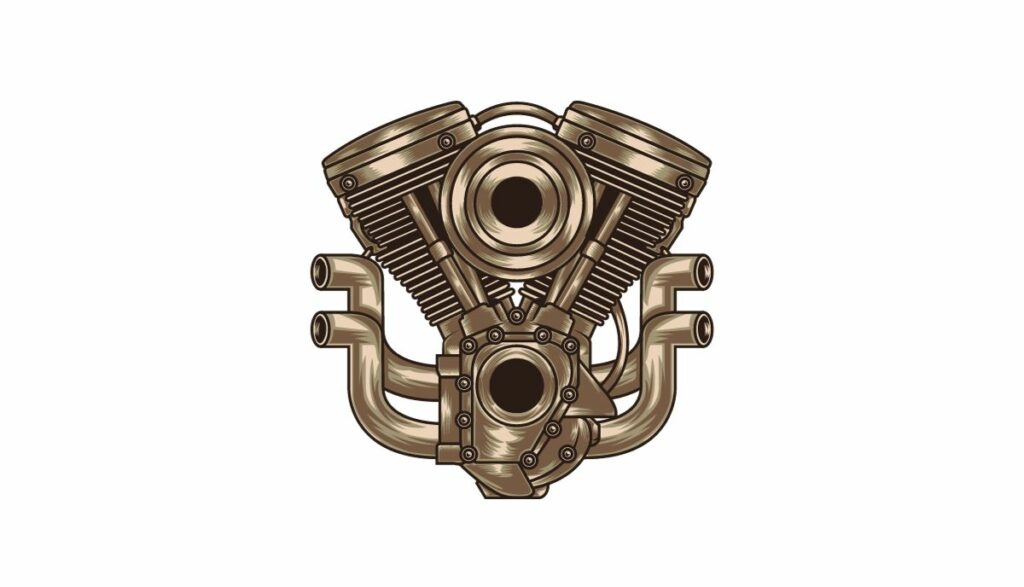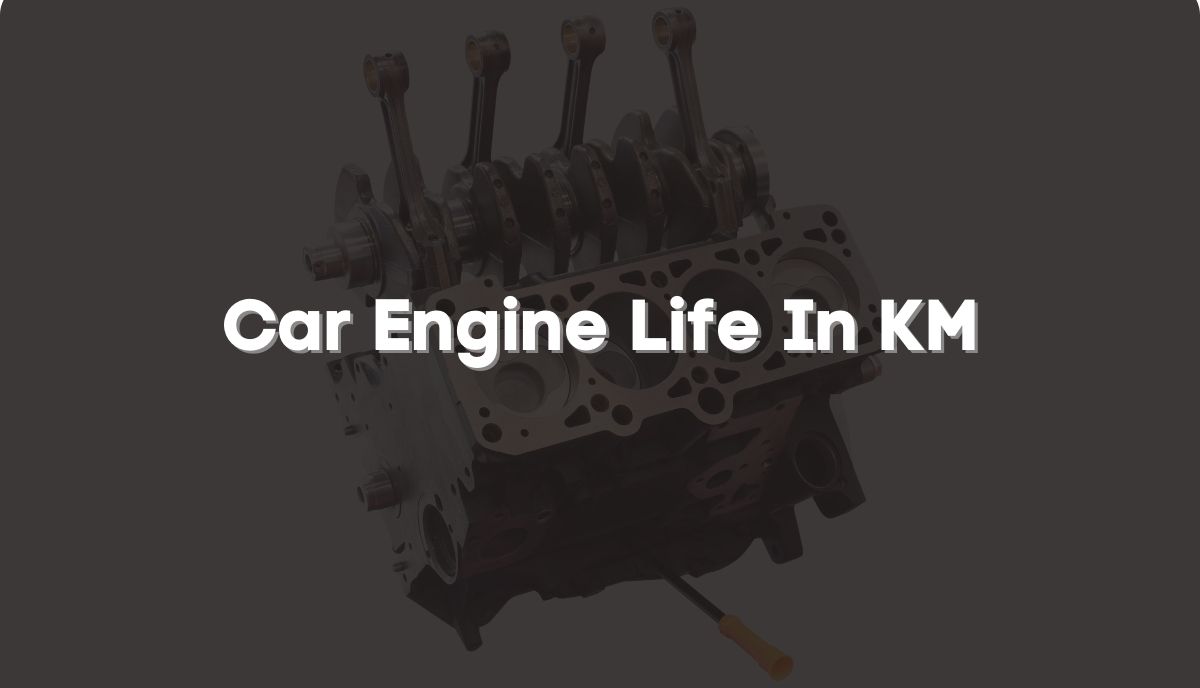Some people think older cars are stronger, more reliable, and longer lasting than their modern counterparts, but is that true? Better yet, what is the average lifespan of a car engine in km? The guide below will tell you.
Car Engine Life In KM
How many kilometers can a car engine last?
| Car Type | Engine Lifespan |
| Petrol Car Engine Life In KM | 200,000 – 250,000 km |
| CNG Car Engine Life In KM | 100,000 km |
| Diesel Car Engine Life In KM | 200,000 – 400,000 km |
People think older cars are somehow superior to modern vehicles despite the absence of contemporary amenities such as air conditioning, but that couldn’t be further from the truth. Irene Michelle Berry (Massachusetts Institute Of Technology) authored a paper analyzing the effects of driving style on fuel consumption in American light-duty vehicles.
She noted that vehicle lifespans had increased noticeably since the 1970s, and the slow turnover had limited reductions in fuel consumption via new technologies. Modern cars have an estimated lifespan of 200,000 miles (320,000 km) or more.
In contrast, Wikipedia has quoted the New York Times, which found that vehicles from the 60s and 70s lasted 100,000 miles (160,000km). If this trend continues, vehicles may attain lifespans of 800,000 km in the near future.
NBC News published a story in 2014 showing that more Americans were embracing older cars. They were choosing to drive their vehicles beyond the 100,000-mile threshold. The average age of cars on American roads had also reached an all-time high (11.4 years), further cementing the idea that modern vehicles last longer than old cars.
What Factors Influence The Lifespan Of A Car Engine In Kilometers?

The following factors will shape an engine’s lifespan:
1). Vehicle Type
What type of vehicle do you drive? This report from the U.S. Department Of Transportation (National Highway Traffic Safety Administration) explores ‘Vehicle Survivability And Travel Mileage Schedules.’
The report assigned passenger cars a lifespan of 126,665 Miles (203,000 km). That figure rose to 153,698 miles (247,000 km) for light Trucks. I-See-Cars has tables showing a vehicle’s chances of lasting 250,000 miles or more. Trucks like the Ford F-350 Super Duty have the highest percentage. You expect to see stronger, more durable engines in larger vehicles.
2). Driving Habits
Did you know that poor driving habits can increase the vehicle’s wear and tear, reducing the engine’s lifespan? Keep an eye out for the following:
- Extra weight strains various automotive systems, including the drivetrain and suspension.
- Revving a cold engine will warm it at a faster rate. However, you can also increase the engine’s wear. The oil has yet to lubricate the moving parts because of the low temperatures. Revving becomes more dangerous the more frequently you do it.
- According to Progressive, driving with low fuel levels is dangerous. Besides causing the cylinders to misfire, it can lead to engine knocking, especially when you move at high speeds because the car will create a richer air/fuel mixture. Knocking will occur because the fuel pump cannot provide sufficient fuel. You may damage the fuel pump in the long run.
- Leaving the car outside in cold weather will increase the oil’s viscosity. Thick oil will not flow. Even if you don’t rev the engine, it may sustain damage because of poor lubrication. Don’t be surprised if the fuel lines freeze.
3). Driving Frequency
- Bell Performance assigns motor oil a shelf life of five years. While it lasts a while, the substance will eventually degrade. Variables like oxygen, light, and heat will induce chemical reactions that reduce the oil’s lifespan. Keeping the bottle closed elongates the oil’s lifespan.
- Usually, mechanics want you to change the oil every 3,000 miles (5,000 km). But Toyota recommends 7,500 – 10,000 miles (12,000 – 16,000 km) for modern motor oil with superior formulations.
- Leaving the oil to sit in the car is a bad idea because the substance will degrade at a faster pace. This can happen if you rarely drive your vehicle. Ocean Works Berkeley has found that people rarely exceeding ten miles when driving don’t allow the engine to burn the moisture off. The water eventually dilutes the oil, creating sludge and acid that corrodes the engine’s parts.
- Pay attention to the appearance (translucent), consistency (thin, smooth, and fluid), and color (amber) of the oil.
- The type of oil matters. Modern cars use synthetic oil with additives that prevent leaks and fight corrosion. It also lasts longer.
4). Maintenance
An IMR Inc. study found that 33 percent of people fail to maintain their cars because they can’t find a convenient time. For another 30.3 percent, maintenance costs are too high. Car servicing involves checking the engine oil, filters, clutch fluid, brake fluid, tire pressure, and more.
The Automobile Association recommends car servicing every 12,000 miles (20,000 km). You will lower the engine’s life expectancy by failing to service the car routinely.
5). Terrain
The terrain can affect your engine’s health. For instance, the engine does more work in rocky landscapes with steep slopes than on a straight, flat, smooth tarmac road. Fame Magazine agrees that the engine uses more energy when the car crosses steep and rugged terrain.
6). Quality
Where do you take your car when it develops an engine problem? Do you trust your mechanic? The quality of the replacement parts will impact the engine’s life expectancy. Low-quality parts are cheap, but they won’t last long. They may even accelerate the engine’s wear and tear.
Some people make things worse by ignoring the ‘Check Engine’ light and driving a car with significant defects.
7). Year
Many mechanics will tell you to avoid the first year of a new model because it features new technology with kinks the manufacturer has yet to resolve. You’re better off waiting for the second or third year when you have a better idea of the car’s reliability.
CNET disagrees with that assessment because manufacturers use refined and precise tools and processes while making modern vehicles, and you see less variance in parts like the engine seals. Additionally, because the best brands offer decent warranties, releasing buggy cars in the first year is not in their best interests.
How Car Engine Life In KM Is Calculated?

The manufacturer knows the engine’s life, but you shouldn’t expect them to release this information to the public. Ultimately, you can’t calculate your car engine’s life in KM because it depends on numerous factors such as the weight the car carries, driving habits, frequency of use, maintenance habits, etc.
These variables keep changing. For instance, what if you drive a car 20 hours a day for a week before leaving it in a parking lot for the next twenty weeks? This paper in Science Direct (International Conference On Industrial Engineering) outlines the formulas for determining a car’s remaining useful lifetime. But even if you apply them, the best you will get is a rough, potentially inaccurate estimate.
Can An Engine Last 200,000 Miles?
Yes, it can. Modern vehicles can last 250,000 miles or more. 200,000 miles do not present as big of a challenge as people think.
Can An Engine Last 300,000 Miles?
According to Kings Toyota, some Prius models have reached the 300,000-mile mark. Electric engines are more likely to achieve that goal.
Can An Engine Last 500,000 Miles?
An engine can exceed 500,000 miles if you perform regular maintenance and timely repairs. The experts at Hot Cars have generated a list of models capable of surpassing 500,000 miles, including the Mercedes Benz W123, Toyota 4Runner, and Mazda Miata.
Can An Engine Last 600,000 Miles?
Jalopnik published a post in 2021 that mentioned a Volvo 245DL with over 600,000 miles. And if you don’t trust that post because you think the owner changed the engine at some point, Top Gear highlighted a Volvo P1800 that had its engine rebuilt after it crossed the 600,000-mile mark. When Volvo technicians took the car apart, they found that an engine rebuild was unnecessary, although the car got one all the same.
Can An Engine Last 1,000,000 Miles?
According to Motor Biscuit, Seldon Cooper’s 1987 Volvo 240 exceeded a million miles even though he never rebuilt the engine. Dan Edelman’s 1996 Dodge Ram achieved a similar feat. Edelman rebuilt the transmission several times but not the engine.
How Does Regular Maintenance Impact The Longevity Of A Car’s Engine?

While discussing Irv Gordon’s 1966 Volvo P1800 (in 2022) and the fact that it had exceeded 3 million miles, Autoweek quoted experts who highlighted ‘Maintenance’ as a critical aspect of a vehicle’s longevity. Maintenance achieves numerous objectives. For instance:
- You can improve lubrication by changing the oil. This protects the engine’s moving parts from friction.
- Changing and replenishing coolant prevents overheating.
- Cleaning or replacing the fuel filter protects the fuel system from harmful substances.
- Cleaning or replacing the air filter keeps dust and other contaminants out of the engine.
- You can protect the water and power steering pumps by replacing a damaged alternator and power steering belt.
- Good spark plugs are vital to the combustion process, which is why mechanics occasionally replace them while servicing your vehicle.

